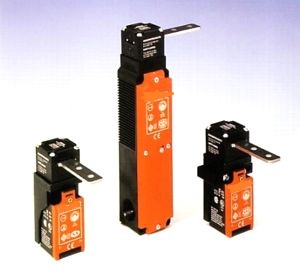Difference between revisions of "Safety Switches"
(Created page with "Category:Switches{{Knoppen}} <noinclude><!------------------------------------------------ * READ THIS FIRST * Only edit this page if you can improve the content. * Impr...") |
|||
| (One intermediate revision by the same user not shown) | |||
| Line 7: | Line 7: | ||
* Please start editing this page after the /noinclude | * Please start editing this page after the /noinclude | ||
* -------------------------------------------------></noinclude> | * -------------------------------------------------></noinclude> | ||
This | [[File:Safety switches.jpg|thumb|right|Safety Switches]] | ||
'''Safety switches''' have the task of preventing machine operation in the event of a safety hazard. In safety switches, positively driven contacts are used for the switching elements. These switching contacts are always reliably separated. The connection is opened by the actuating force even if contacts become welded together. It is a common feature of all switching elements that at least one switching element is designed as a positively driven contact. Often two positively driven contacts are employed to increase safety using the principle of duplicated design . This dual-channel design ensures that the failure of one channel or a fault in the control circuit can be detected and the interlocking function can still be provided with the aid of the second channel. | |||
Safety switches are designed to be mounted near a motor or a machine to isolate the main circuit. They are manual switches, padlockable in the off-position, with reliable position indication, and designed to prevent the accidental start of electrical machinery with reliability, e.g. during maintenance and repair situations. | |||
Latest revision as of 09:35, 22 December 2012
Safety switches have the task of preventing machine operation in the event of a safety hazard. In safety switches, positively driven contacts are used for the switching elements. These switching contacts are always reliably separated. The connection is opened by the actuating force even if contacts become welded together. It is a common feature of all switching elements that at least one switching element is designed as a positively driven contact. Often two positively driven contacts are employed to increase safety using the principle of duplicated design . This dual-channel design ensures that the failure of one channel or a fault in the control circuit can be detected and the interlocking function can still be provided with the aid of the second channel.
Safety switches are designed to be mounted near a motor or a machine to isolate the main circuit. They are manual switches, padlockable in the off-position, with reliable position indication, and designed to prevent the accidental start of electrical machinery with reliability, e.g. during maintenance and repair situations.
